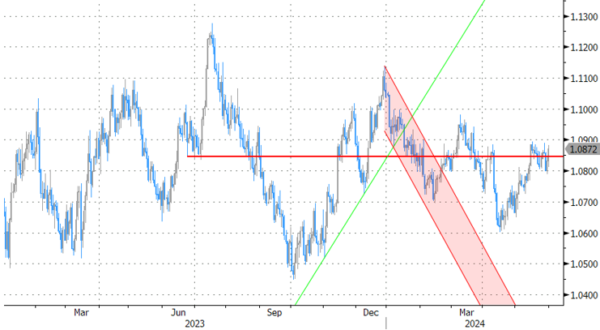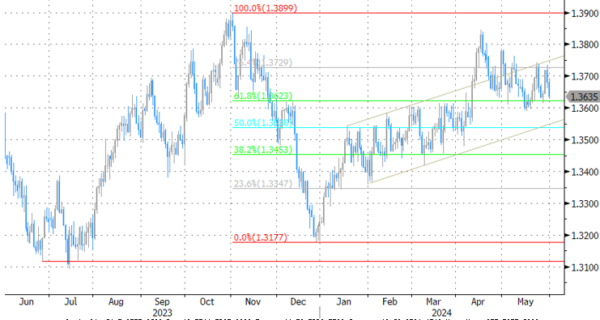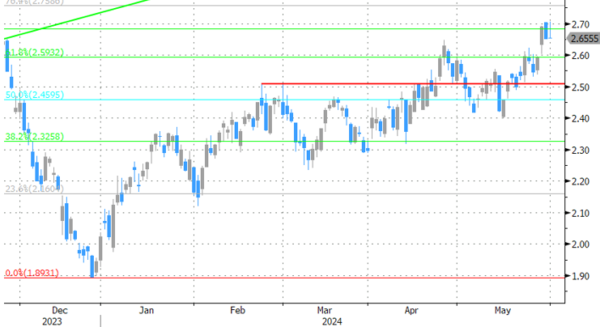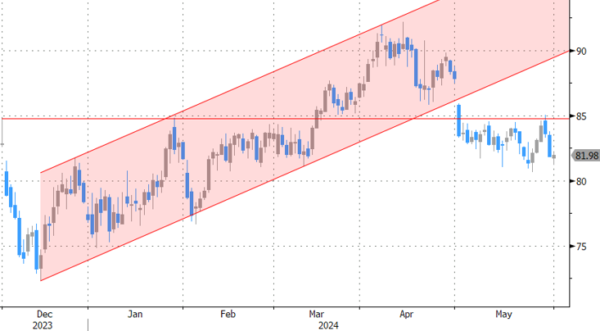Markets
With the EMU May Flash CPI and the US (core) April PCE deflators on the agenda, global trading today again was fully focused on inflation and what it could mean for the start and/or the pace of monetary easing. EMU inflation surprised slightly to the upside. Headline CPI slowed to 0.2% M/M from 0.6% but base effects caused the Y/Y measure to reaccelerate from 2.4% to 2.6% (2.5% expected). Core inflation also unexpectedly rebounded from 2.7% to 2.9%. A steep rise in services inflation (4.1% from 3.7%) likely will cause some discomfort at the ECB, especially in the wake of stronger than expected Q1 wage growth published last week. The ECB assumes that high Q1 wage data was for an important part due to one-offs and that it won’t revive a wage price spiral. The May services inflation indicates that, at least for now, this is mainly hope and hypothetical thinking. Today’s release won’t prevent the ECB to start its easing cycle with a 25 bps cut next week. However, markets further reduced the probability of a third ECB rate cut by year end to 25% from 50% at the start of the week. US April income rose 0.3% as expected. Spending was marginally softer at 0.2% M/M. The hyped April deflators (headline 0.3% M/M, 2.7% Y/Y, core 0.2% M/M; 2.8% Y/Y) printed bang in line with expectations and a such didn’t change the narrative since the CPI data published earlier this month. Still, at the final day of the month and going into the weekend, the absence of an upside inflation surprise apparently was enough for US bond markets to build on yesterday’s correction after the rise in yields earlier this week. US yields currently ease 3-4 bps across the curve (2-y 4.91%, 10-y 4.51%). German yields add up to 2 bps, scaling back a bigger intraday rise before the US data. After three days of correction, middle-of-the-road US data support a most rebound of US equities (S&P500 + 0.3%), but momentum isn’t really convincing. Oil (Brent $82 p/b) struggles to avoid further losses going into this weekends OPEC+ meeting.
(Relative) divergence in the inflation dynamics (and yields) between the US and EMU supports the euro and at the same time prevents the dollar to really move away from the support levels tested earlier this week. A two-step intraday rally brings the EUR/USD pair (1.088) again within reach of the 1.0895 correction top. DYX currently trades near 104.4 with the mid-May low at 104.08. Yen gains, even against a weakish dollar remain limited (USD/JPY 156.8). Data published today showed Japanese authorities used JPY 9.8 trillion ($62 Bln) for interventions to prevent further yen weakening. Euro strength also lifted the EUR/GBP cross rate (0.853) off from the key 0.849/0.8500 support area.
News & Views
Turkish growth quickened sharply in the first quarter of this year. A 1.6% q/q analyst estimates for a 2.4% expansion proved too conservative. Quarterly growth was by far the result of strong private consumption, flanked by contributions from capital and government expenditures as well as net-exports. While resilient domestic consumption poses risks for the central bank (CBRT) trying to beat down inflation (currently between 70% and 75% depending on the gauge), it is believed that Turkey is now headed for an economic cooldown. The CBRT has jacked up interest rates since June of last year from 8.5% to 50% in March. Its lagged effect is expected to increasingly filter through the economy. Indeed, the central bank at the May policy meeting last week noted that “Recent indicators point to a slowdown in domestic demand compared to the first quarter.” The Turkish lira was left untouched today. Both against the dollar (32.20) and the euro (35.02) TRY is hovering close near its record lows.
Canadian GDP expanded an annualized 1.7% in Q1. That’s less than the 2.2% expected and followed on a downwardly revised 0.1% in the previous quarter. Monthly GDP data showed growth concentrated in the first two months with March printing flat. Statistics Canada said higher household spending on services (1.1%, bringing total consumer spending to 0.7%) was the main contributor, followed by business capital investment (0.8%). Slower inventory accumulations moderated overall growth. The numbers are the final input to the Bank of Canada’s policy meeting last week. Along with sustained downward momentum in (core) CPI, which came in at a pace between 2.6 and 2.9% in April, the BoC is also focused on the balance between demand and supply in the economy. Consensus expects the central bank to cut rates a first time this cycle to 4.75%. Money markets have increased bets to 80%. USD/CAD declines today but mainly because of dollar weakness. The pair trades around 1.363.
Graphs
EUR/USD: relative inflation and yields divergence propels the euro near the 1.09 resistance area.
USD/CAD: loonie doesn’t decline on softer than expected Q1 growth data. Start of BoC easing cycle discounted?
German 10-y yield trying to close the week north of the 2.65% previous YtD top.
Brent oil struggles to avoid a drop below $ 80/82 p/b area going into this week’s OPEC+ meeting.
















